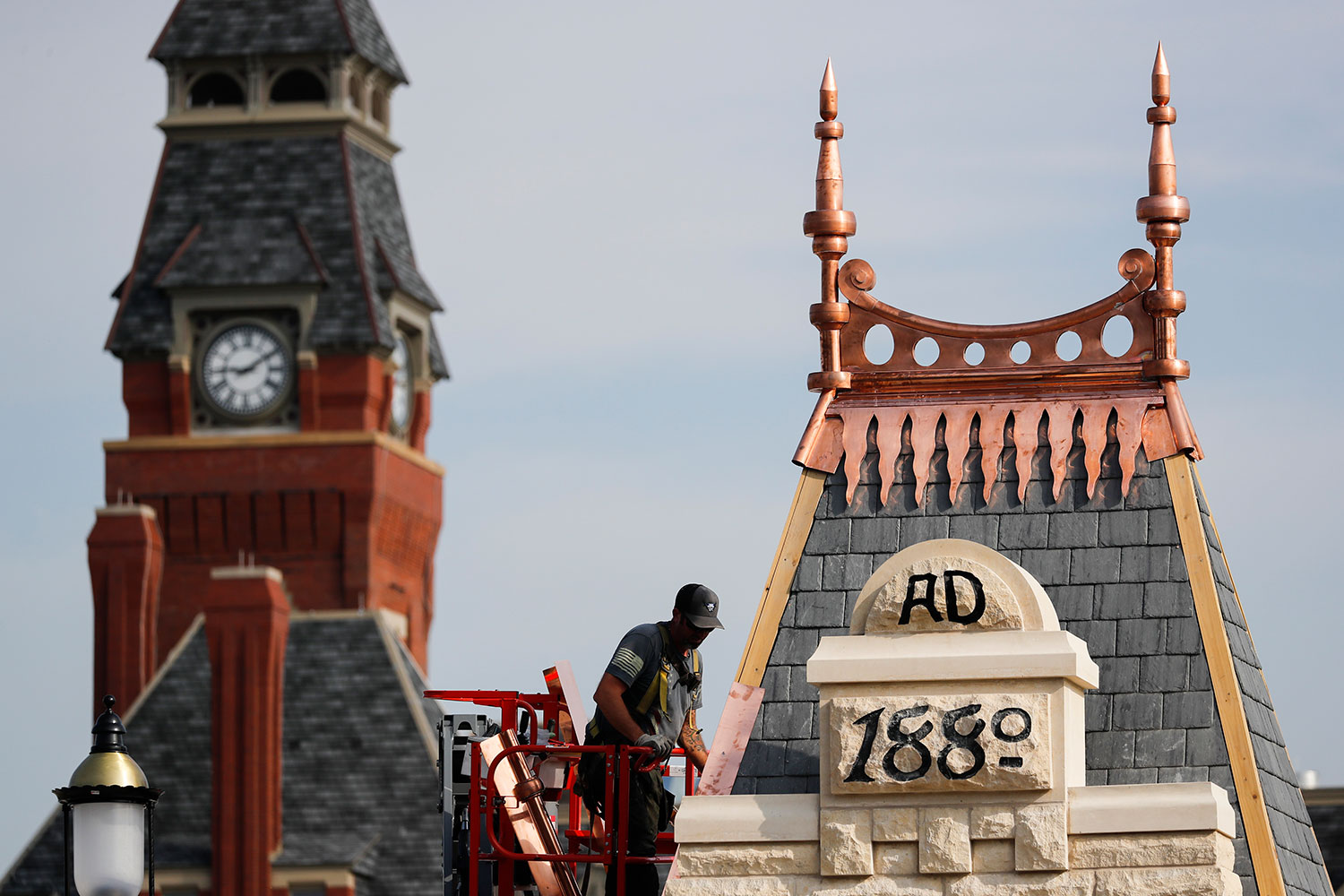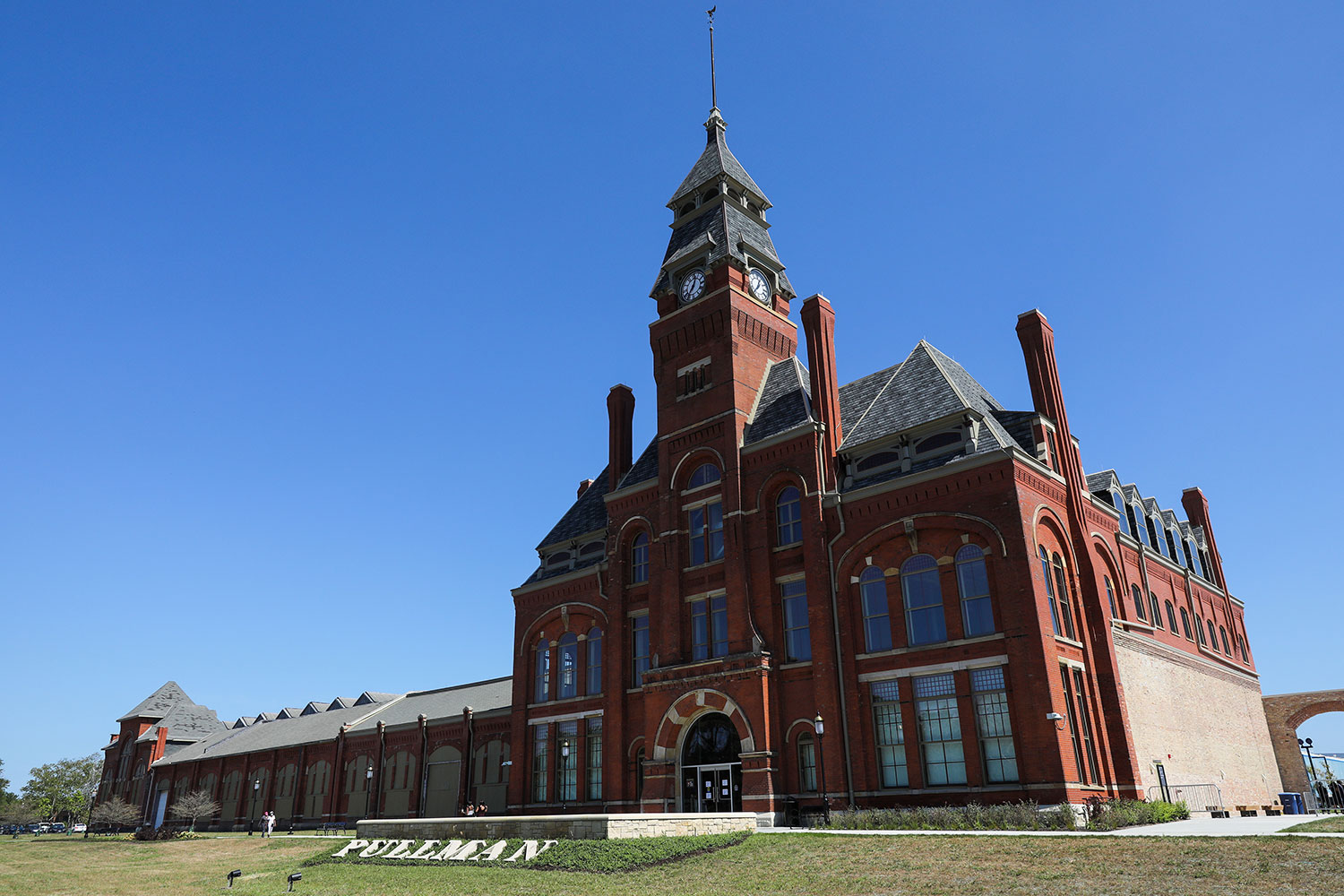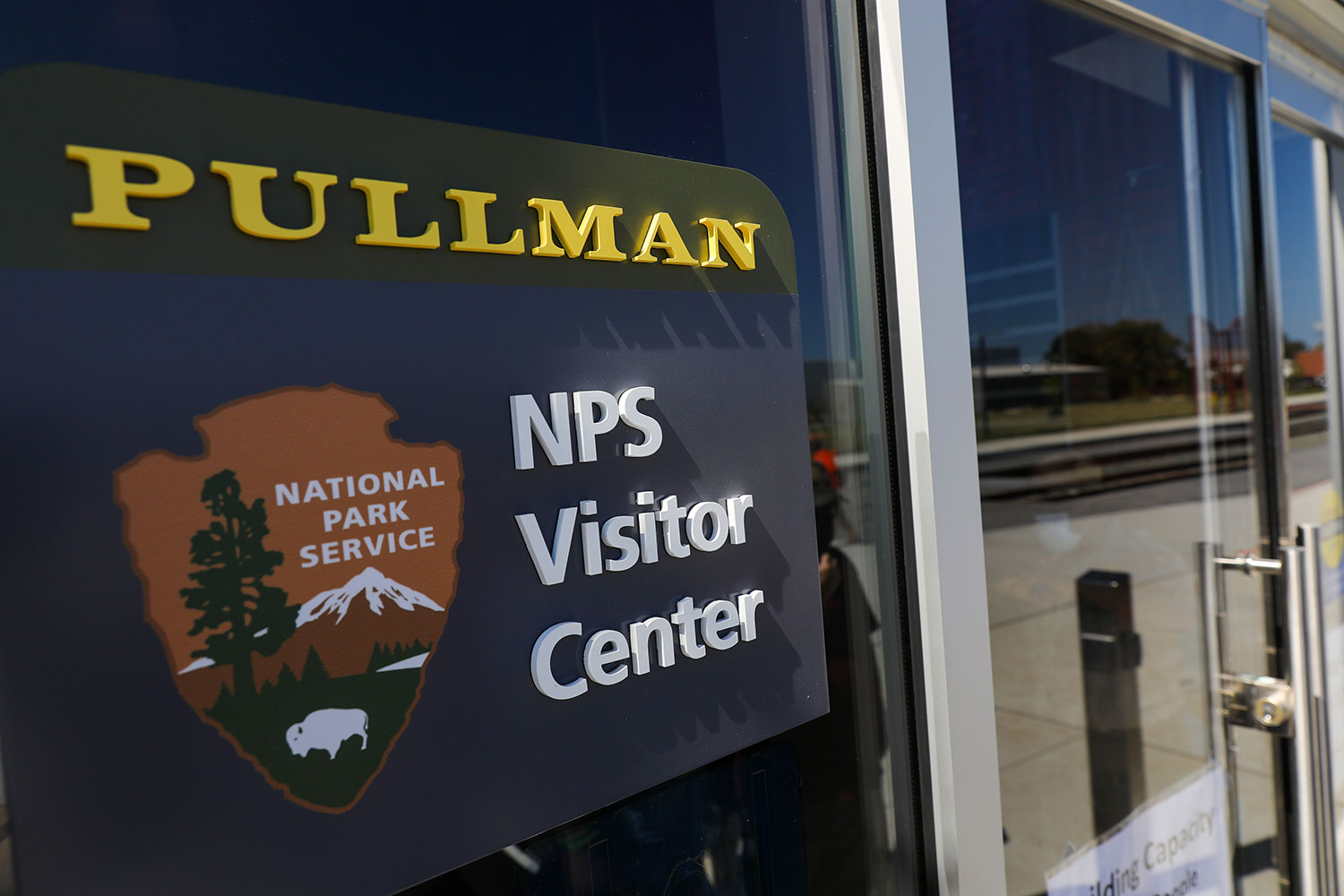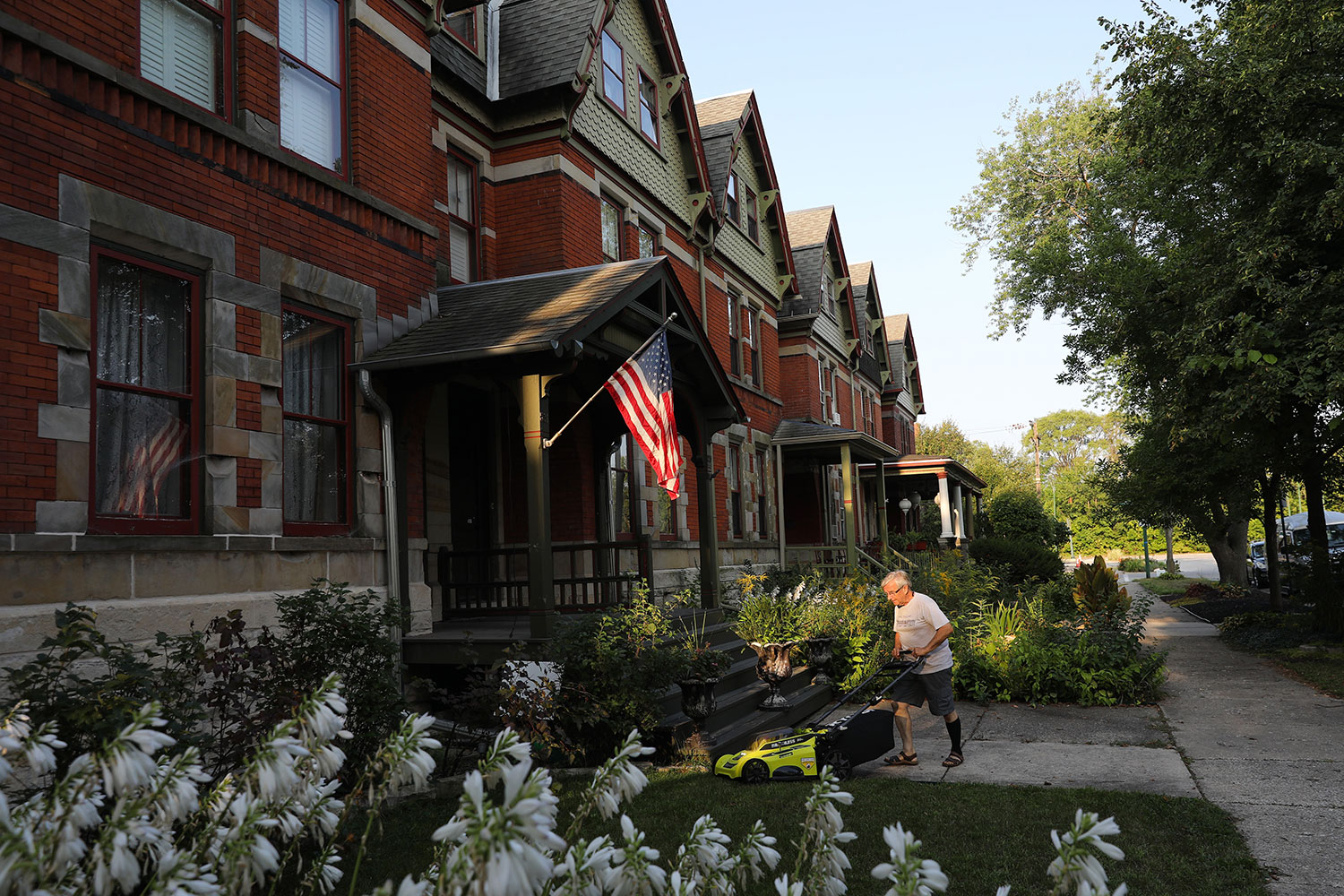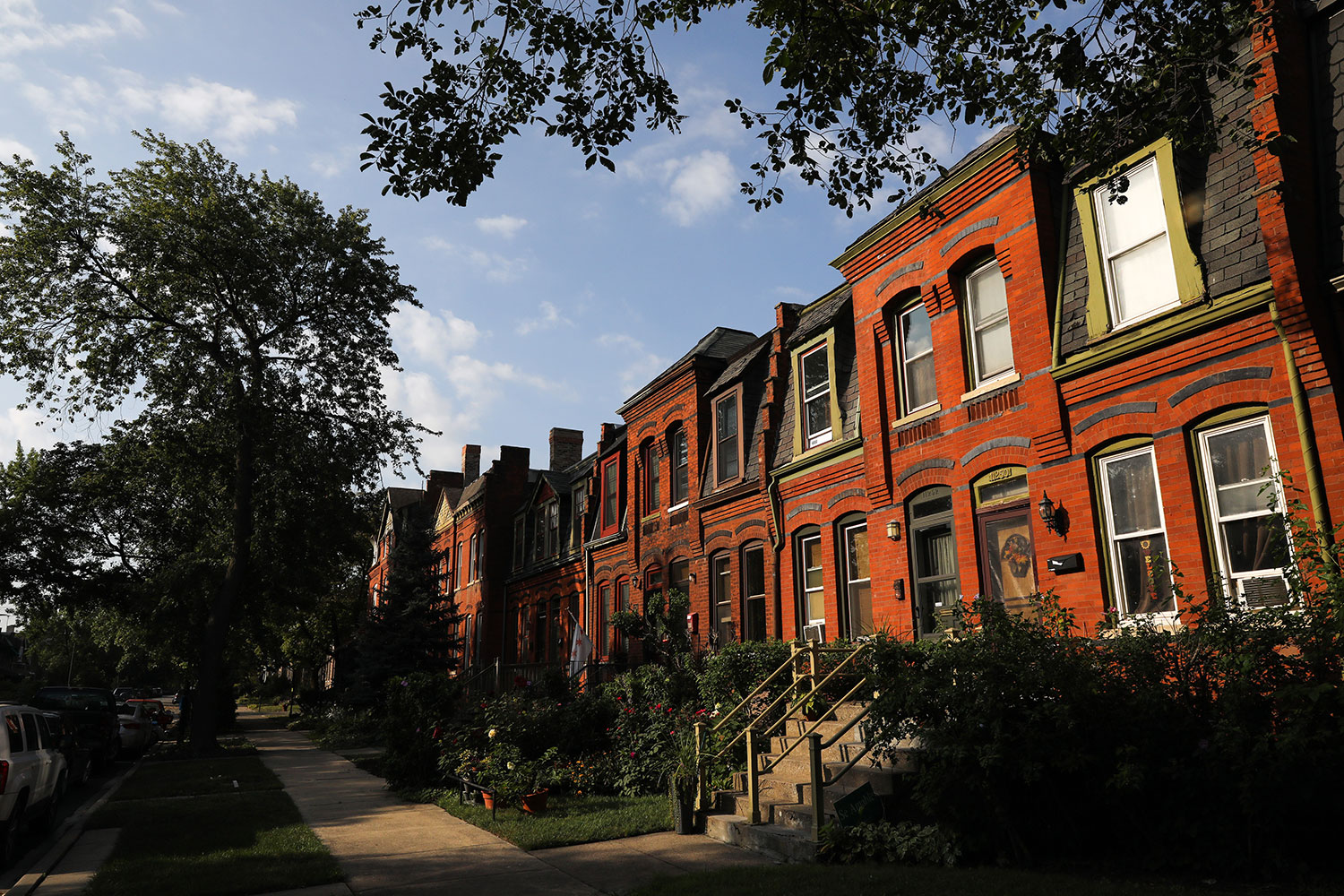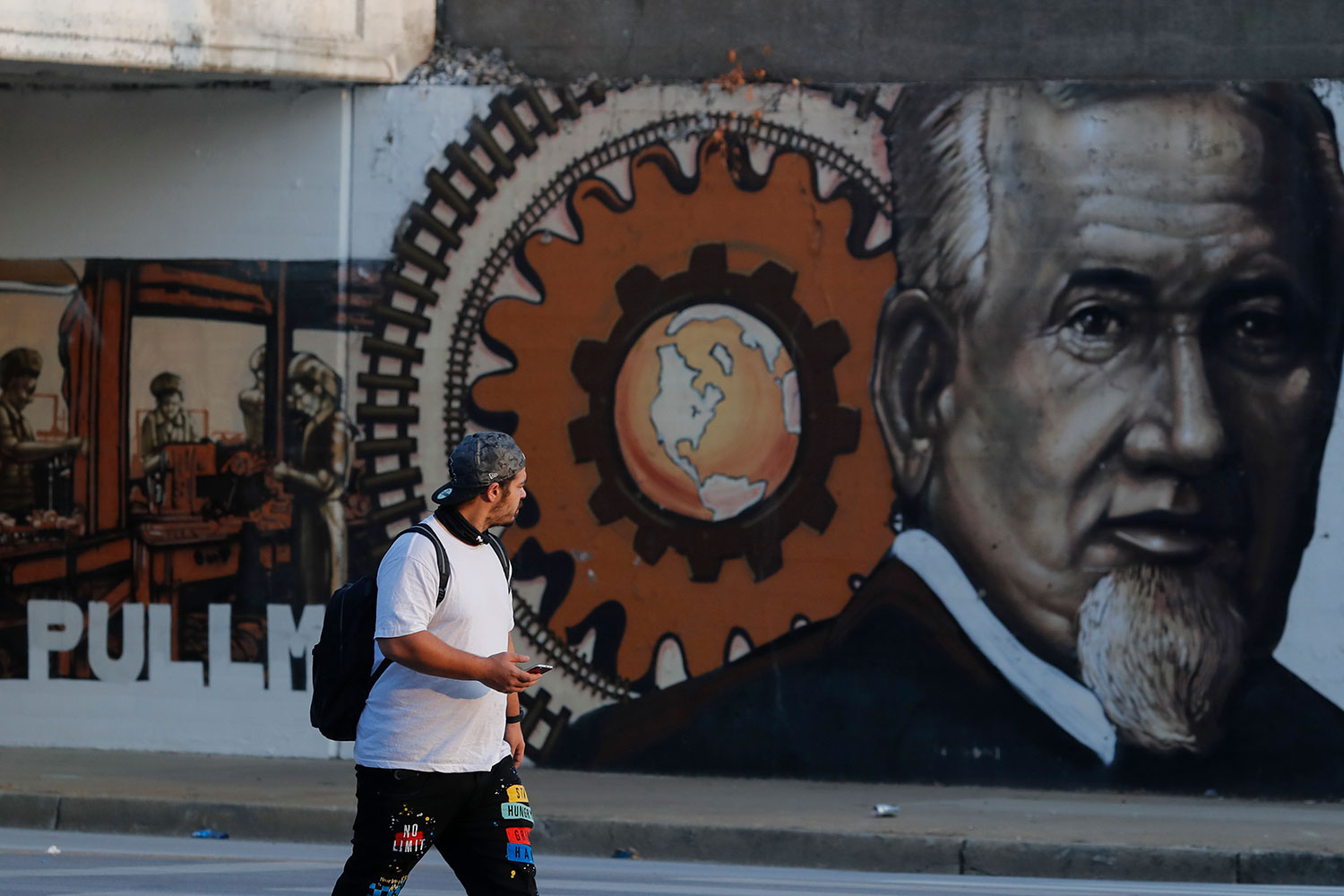Pullman looks like nowhere else in Chicago, or even the Midwest. Its blocks of rowhouses, with American flags dangling from brackets bolted into the brick, and rose gardens blooming in the tiny yards, make it resemble an older neighborhood in one of the old coastal, colonial cities: Boston, Philadelphia, or Baltimore.
Pullman, of course, was not designed to be part of Chicago. It was one of America’s first planned industrial communities, constructed between 1880 and 1892 to house the laborers, craftsmen and managers of Pullman’s Palace Car Company, which built the most lavish carriages of the Railroad Era. Founder George Pullman was partially inspired by Saltair, a textile town near Leeds, England.
Last Labor Day, Pullman was dedicated as a National Monument, at a ceremony attended by the Secretary of Labor, the governor and both senators. The park service opened a museum, which tells the company’s story. In the late 19th and early 20th centuries, a Pullman sleeper was the equivalent of a private jet, and the word “Pullman” stood for luxury, as much as Cadillac did later. The 1894 Pullman strike, broken by federal troops, was a bloody shirt for the labor movement. Air travel and interstates made passenger trains an anachronism; the last Pullman rail car was built in 1982.
If you visit the museum, though, be sure to take a walk around the neighborhood. Pullman’s motive in owning his employees’ housing was profit: He deducted rent from their paychecks. But he built houses of high quality and architectural distinction — fireplaces, wooden trim, wainscoting, skylights. More than a century after the Illinois Supreme Court forced the Pullman Company to get out of the housing business, this has resulted in an unusual legacy, especially for Chicago: Pullman is an island of integration on the otherwise segregated Far South Side. According to the last census, the neighborhood bounded by the Illinois Central Railroad, 111th Street, the Bishop Ford Freeway, and 115th Street is 45 percent Black, 32 percent white, and 24 percent Latino — numbers close to the city’s at large, but found almost nowhere in one place.
Last week, I walked around the neighborhood with Mike Shymanski, who moved to Pullman in 1967, when he was a young, newly wedded architect, attracted by “the diversity of housing. It was pedestrian scale, because of the density of rowhouses, you got to know the people on your block. At that time, it was a real convenient neighborhood. There were half-a-dozen bars, grocery stores, restaurants. Michigan Avenue was major retail. We actually functioned for two years without a car.”
Pullman almost didn’t make it that far. In 1959, the city proposed to tear it down and replace it with an industrial park to serve Calumet Harbor, which was booming after the opening of the St. Lawrence Seaway: “at that time, older buildings were looked at on a negative basis. Buildings in Pullman were 80 years old, and one could qualify older buildings for replacement.”
The Pullman Civic Organization resisted the plan. Pullman was spared, and remained racially stable, even as white flight turned the demographics of nearby Roseland upside down — another change Pullman resisted. Shymanski lives on Arcade Row, a block of houses with mansard roofs and wooden porches, which are today occupied by the same class of people Pullman built it for: white-collar professionals. Every original Pullman home is a historic landmark, so residents can’t make changes to their homes’ exteriors without permission from the city, but people who move there like it that way: “There are people who were attracted to the neighborhood because of the historic character,” Shymanski said. “There are all sorts of people who live in these houses: educators, engineers, skilled workers.”
(South of 111th Street, 90 percent of the houses are original. North of the 111th, the figure is 30 percent. North Pullman is almost exclusively Black and low income. There can be found the A. Philip Randolph Pullman Porter Museum, currently closed for expansion. The Pullman porters, all African American, “were the unofficial distribution arm of the Chicago Defender and the Pittsburgh Courier,” said director David Peterson. “That’s how people found out about the opportunities up here. That was the driving force behind the Great Migration.”)
Pullmanites certainly have a sense of living in a “special place,” as Shymanski puts it. They show off their neighborhood with walking tours on the first Sunday of each month. The Historic Pullman Garden Walk is June 25, and the Historic Pullman House Tour is October 8 and 9. The Historic Pullman Foundation would like to see a reopening of the Hotel Florence, which served Sunday brunches until 2000, when it was closed for renovation by its owner, the Illinois Department of Natural Resources. Those renovations are still going on.
In this neighborhood of landmarks, no landmark is more striking than Greenstone United Methodist Church, designed in 1882 by Pullman’s house architect, Solomon Spencer Beman, and built from moss-colored stone quarried in Pennsylvania. The sanctuary seats 600, but most Sundays, the Rev. Luther Mason preaches to 15 to 25 parishioners, mostly Black, and struggles to attract a cross-section of the community.
“During the pandemic, we had the best time of diversity,” said Mason, who lives in the parsonage on St. Lawrence Street. “When we were inside, it’s our own little crew, but when we went out on Solomon’s Porch, we had Black folks, white folks, Latinos.”
From the back of the sanctuary, an arched stained-glass window, shaped like a God’s eye, casts tinted light on empty pews, peeling paint, cracked walls, and a manual tracker organ as old as the building. Many churches with such meager congregations have closed. Not Greenstone. Nothing gets torn down in Pullman; that feeling of permanence keeps people in the neighborhood for decades, even generations. (Shymanski’s son and daughter live in Pullman.) Greenstone is a historic congregation, in a historic building.
“We fought for workers’ rights in the strike,” Mason said. “We organized relief. Rev. [William H.] Carwardine, he wrote the book, The Pullman Story, which led the Illinois Supreme Court to force Pullman to divest from housing. The church could be sold and turned into a recital hall and B&B, but I’ll be damned if it’s gonna happen while I’m here.”
Preservations will be damned, too. In the last year-and-a-half, Greenstone has received a $145,000 grant from the National Trust for Historic Preservation to stabilize its steeple and repair its roof, and $1.08 million from the city’s Adopt-a-Landmark program to repair the bell tower. The church also needs to replace the stone, which has been decayed by decades of acid rain. The new cladding will be mixed with jade-colored serpentine stone to maintain its greenish color. The stones will look “exactly like the original,” Mason promised.
That’s what Pullman wants to hear. A New York Times columnist once wrote that no American city has changed as much over the last 30 years as Chicago. Pullman hasn’t changed much, though. George Pullman died in 1897, but he’d still recognize his industrial village.
Related Content



